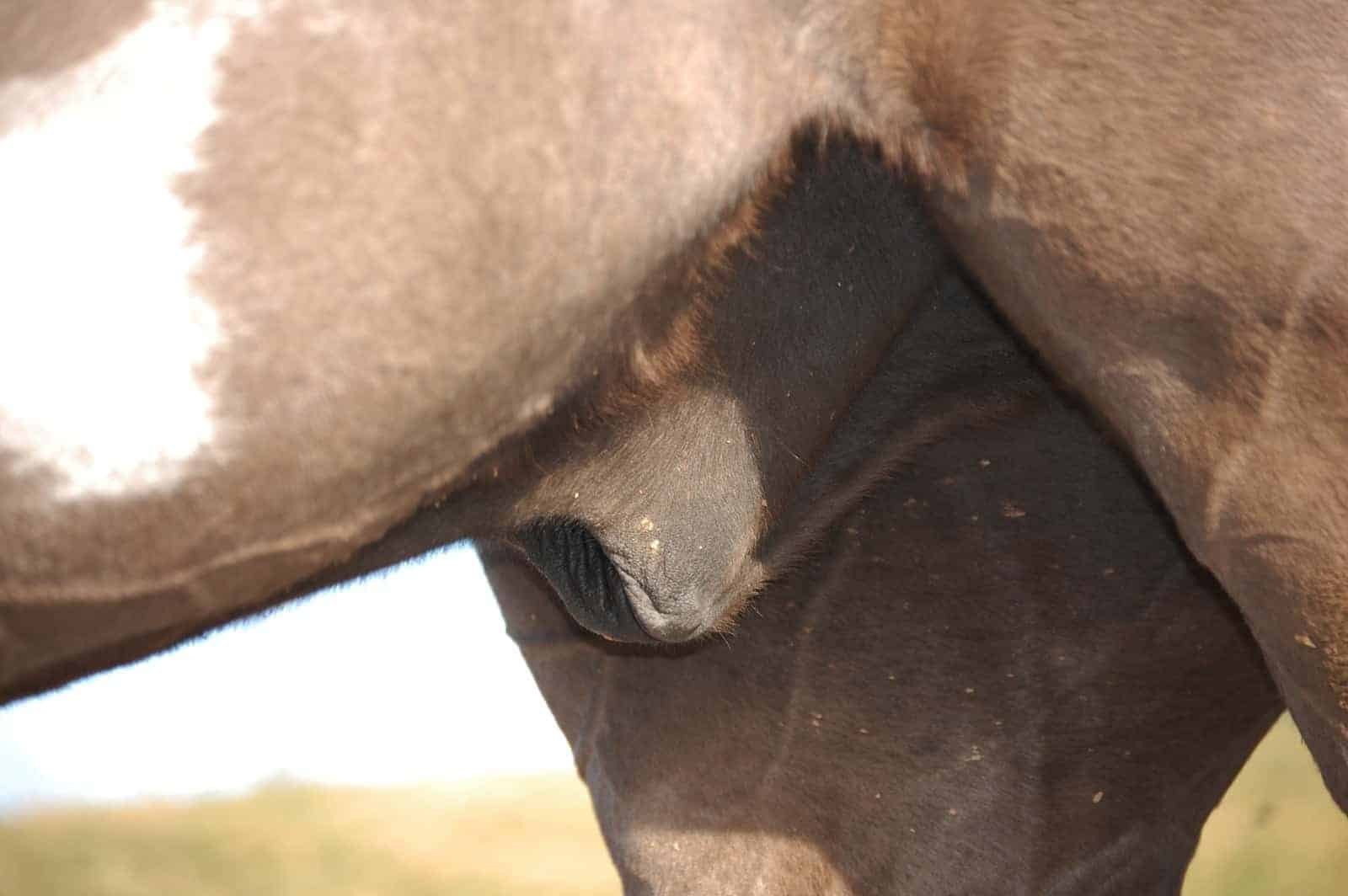Male Horse Hygiene
- Topics: Article, Basic Care, Grooming, Stallion Care

The sheath is a double fold of skin that covers the drawn-up penis. A dirty sheath, with a buildup of debris from a mixture of dirt and urine, can lead to infection or urinary problems. Glands in the lining of the sheath, called sebaceous glands, produce a secretion called sebum. When this secretion mixes with dirt and sloughing skin cells, it forms a gray to black material called smegma. Sometimes these secretions build up and accumulate into a soft, wax-like deposit, or create dry, hard flakes.
Most male horses develop buildups of old secretions and dirt, which then irritate the sheath and penis and cause problems. If the sheath lining becomes irritated, soreness and swelling can make it difficult for the gelding to let down his penis to urinate. Dirt, sweat, and urine salts (and fat cells excreted in the urine) can collect near the sheath’s opening, mixing with the smegma, and cause irritation. A dusty or dirty environment can worsen the problem.
It’s not as problematic for a breeding stallion as for a gelding because the penis is usually cleaned prior to breeding or prior to semen collection with an artificial vagina. If the stallion is not used for breeding purposes, then the same problem can develop as occurs in the gelding
Create a free account with TheHorse.com to view this content.
TheHorse.com is home to thousands of free articles about horse health care. In order to access some of our exclusive free content, you must be signed into TheHorse.com.
Start your free account today!
Already have an account?
and continue reading.
Written by:
Heather Smith Thomas
Related Articles
Stay on top of the most recent Horse Health news with















